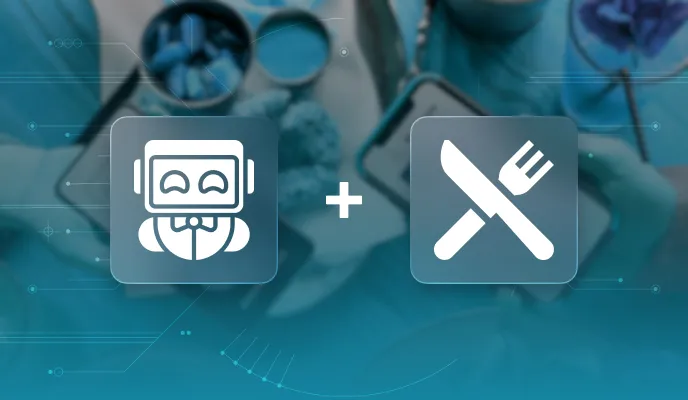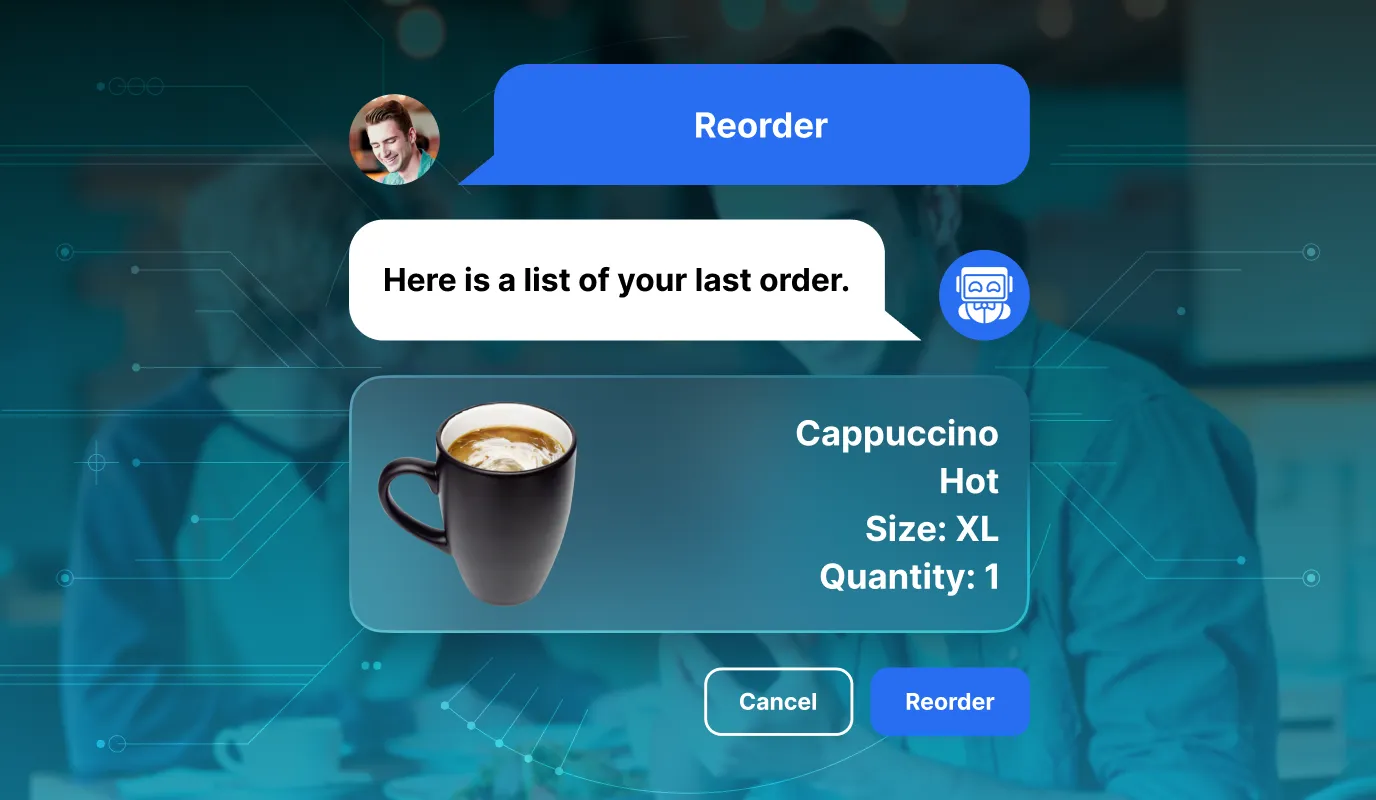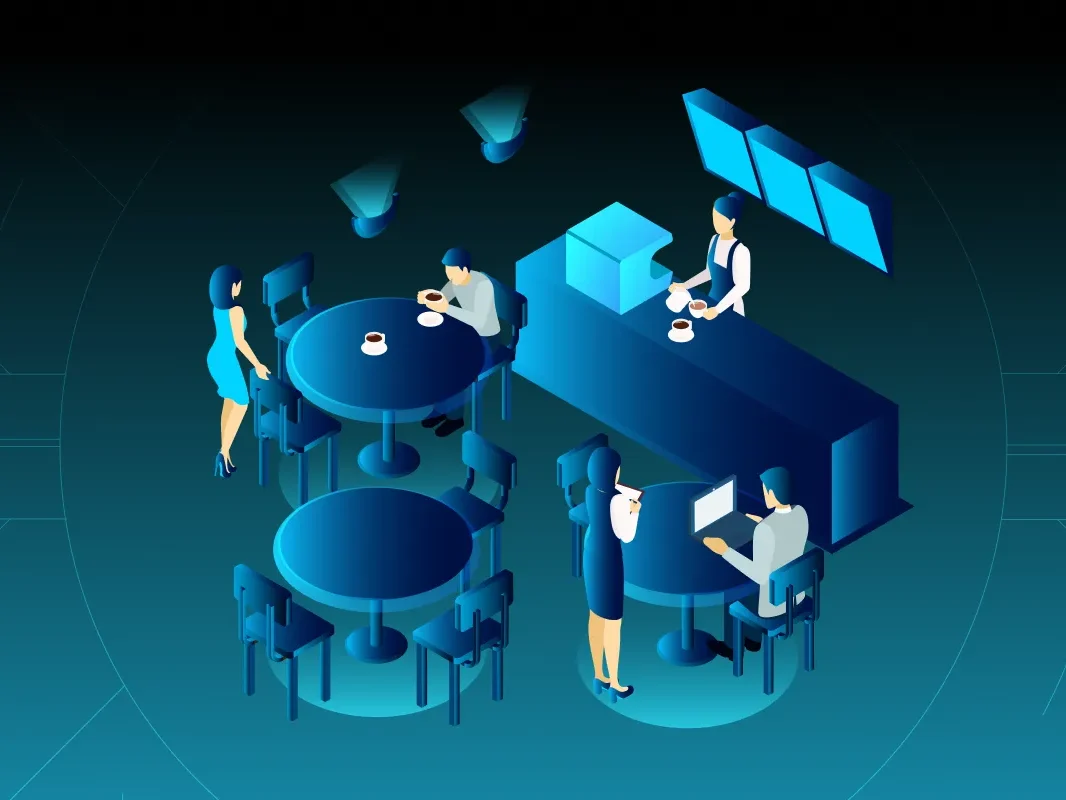The use of chatbots in the restaurant industry isn’t a short-term trend. Powered by artificial intelligence, LLM, and NLP algorithms, they have transcended their conventional roles as mere digital assistants. From reservations to personalized recommendations and event announcements, restaurant chatbots are profoundly transforming how restaurants operate and engage with their customers.
To benefit from this innovation, you, as a restaurant owner or general manager, should know its basic capabilities and the integration algorithm. In our guide, we prepared full information on how to boost your business with AI restaurant tools, focusing on elevating customer satisfaction while optimizing operational processes.
Areas in Which Chatbots for Restaurants Can Be Helpful
Restaurant chatbots are software programs designed to simulate conversations with human users. In the restaurant industry, they serve as digital maitre d’s, offering a wide range of functions that enhance customer engagement, streamline operations, and boost revenue.
Let’s look at several restaurant chatbot examples and how you can benefit from their implementation:
- Reservation and Booking Assistance: A chatbot restaurant reservation includes checking table availability in real time and assisting customers in booking a table, whether through the restaurant’s website, social media platforms, or messaging apps. The system sends instant booking confirmations and reminders, reducing no-shows and optimizing table turnover. According to OpenTable, restaurants that utilize chatbots for reservations have seen a 30% increase in bookings.
- Menu and Specials Showcase: The menu chatbot provides detailed information about the meals, including descriptions of dishes, ingredients, and nutritional facts. They can even offer recommendations based on customer preferences. They highlight daily specials, promotions, and seasonal offerings, enticing customers with appetizing options.
- Ordering and Delivery Facilitation: These virtual assistants streamline the ordering process, allowing customers to place orders, customize dishes, and make payments directly through the chat interface. They can be integrated with the restaurant’s POS system and third-party delivery services, ensuring seamless order processing and timely delivery.
- Customer Support and FAQs: Chatbots excel at providing instant responses to frequently asked questions (FAQs). Customers can inquire about operating hours, location, parking, and dietary options. They offer quick solutions to common issues, such as reservation changes or order tracking.
- Feedback and Reviews Collection: Restaurant chatbots actively seek feedback from customers after their dining experience. They motivate users to rate their visits and leave reviews, which can be invaluable for improving service quality. They analyze sentiment and gather insights into customer wishes, expectations and pain points.
Chatbots employ AI algorithms to offer personalized food and drink recommendations based on past orders and product wish lists. This level of personalization enhances the dining experience. They suggest dishes, wines, or desserts that align with individual tastes, increasing upsell opportunities.

How to Use Restaurant Chatbots Effectively?
Using chatbots for restaurants requires a strategic approach that considers both meeting customer needs and achieving operational efficiency. Here’s a step-by-step guide on how to use the technology solution effectively:
Preparation stage
Identify your goals before implementing a restaurant chatbot. Are you aiming to improve customer service, boost reservations, streamline orders, or achieve other specific objectives? Hold discussions with key stakeholders to outline the primary objectives and desired outcomes.
Determine who your primary customers are and what their preferences and needs are. This information will help to improve design and functionalities.
Select a platform that aligns with your target audience. Common options include website integration, Facebook Messenger, WhatsApp, or a dedicated app. Consider where your target audience is most active and which platform aligns with your restaurant’s digital strategy.
Outline the specific use cases or tasks your artificial intelligence chatbot will perform. Will it handle reservations, menu inquiries, order placement, or customer support? Create a comprehensive list of all the tasks the chatbot will be responsible for.
Personalize customer interactions
Leverage customer data to personalize chatbot interactions. Customize recommendations, greetings, and responses based on customer preferences and history. Your virtual assistant should have access to customer data, such as previous orders and loyalty program status, to provide personalized recommendations and offer tailored promotions.

Let’s say a customer named David frequently orders vegetarian dishes and enjoys spicy food. When David interacts with the chatbot, it welcomes him by name and suggests new vegetarian and spicy dishes on the menu. A study by Epsilon found that 80% of consumers are more likely to make a purchase when brands offer personalized experiences.
Integration with existing restaurant systems
Integrate the tool with your restaurant’s point-of-sale (POS) system, reservation platform, and delivery services. This ensures smooth order processing and minimizes errors. For example, when a customer books a table through the chatbot, it should update the restaurant’s reservation system in real-time, ensuring accurate availability information. When a customer orders a specific dish, the chatbot should cross-reference it with the restaurant’s inventory management system. If an item is unavailable, the chatbot can suggest alternatives.
Any changes made to your menu in your POS system should automatically reflect in the chatbot’s menu options. This integration ensures that customers always access accurate menu information, reducing confusion and order errors.
Get an Expert Solution
Careful planning, clear objectives, and seamless integration with your existing systems are the basic steps of successful innovation implementation. The preparation stage sets the foundation for success, ensuring that your chatbot aligns with your goals, audience, and brand identity.
To take the next step in harnessing the full potential of restaurant chatbots, we offer you a MetaDialog engine. Our expertise and tailored solutions can help you create a chatbot that not only meets your objectives but also enhances the dining experience for your valued customers.
Don’t miss out on the opportunity to elevate your restaurant’s service, engage with customers like never before, and propel your business into the future. Contact MetaDialog now to book a demo and take the first step toward a new era of restaurant excellence.
